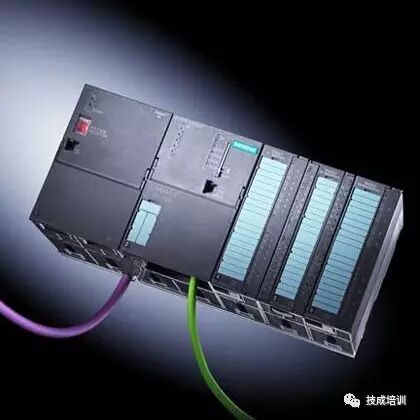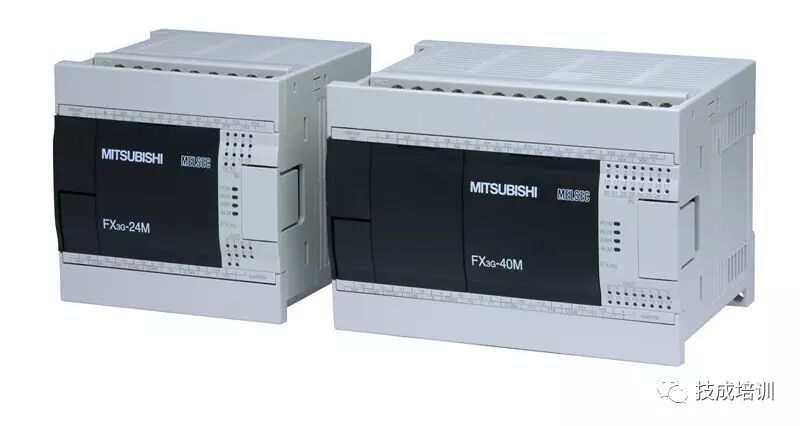There are many types of PLCs, with brands generally categorized into European, Japanese, and American. The German PLCs are primarily represented by Siemens, while the Japanese brands include Mitsubishi, Omron, and Panasonic, among others. American brands include Rockwell (A-B), General Electric (GE), and Modicon. The PLC technologies in the US and Europe have been developed independently in isolation, leading to significant differences in their products. In contrast, Japanese PLC technology was introduced from the US, inheriting certain aspects of American PLC products, but Japan primarily focuses on small PLCs. The US and Europe are known for their medium to large PLCs, while Japan is renowned for its small PLCs.
The differences in thinking styles lead to different problem-solving approaches across various series of PLCs. Therefore, beginners should understand the distinctions between different brands of PLCs to have a clear problem-solving mindset during their learning process. Below, I will detail the similarities and differences between Siemens and Mitsubishi PLCs.
Learning PLCs involves not only acquiring basic programming knowledge and concepts but also understanding the problem-solving approaches of different manufacturers. Different individuals have varying perspectives on the same issue, especially when comparing PLCs from regions with such significant differences. During usage, one can experience how these two types of PLCs address the same problem: how do they solve it? Why do they choose this method? What are the benefits of this approach? Which method do you prefer (or which is more convenient)? Learning to think critically will accelerate your progress!
1. Different Programming Concepts
Mitsubishi PLCs are a Japanese brand, with programming that is intuitive and easy to understand, making it relatively easy to learn, although it has more instructions. Siemens PLCs, being a German brand, have more abstract instructions, making them more challenging to learn, but they have fewer instructions. Thus, the learning cycle for both Mitsubishi and Siemens is similar.

In my opinion, Mitsubishi (a mid to high-end Japanese brand) PLC software is at least five years behind Siemens. Not to mention medium and large PLCs, just comparing the small FX series, which has advantages over Siemens’ S7-200 series, Siemens has the following advantages:
1. Mitsubishi’s programming software has evolved from the early FXGPWIN to the recent GX Developer 8.8, and like all Japanese brands, its programming approach is a top-down single vertical structure. In contrast, Siemens’ Micro-WIN features both vertical and horizontal structures, and subroutines support local variables, allowing the same functionality to be programmed only once, significantly reducing development difficulty and time.
2. The S7-200 has always supported powerful floating-point operations, with the programming software directly supporting decimal input and output, while Mitsubishi only introduced this feature in the recent FX3U series; the previous FX2N series had a fake floating-point function.
3. The analog input and output programming for the S7-200 is very simple and convenient, allowing AD and DA values to be accessed directly without programming, while Mitsubishi’s FX2N and earlier series require very cumbersome FROM TO instructions. The FX3U now supports this functionality, but it is at least five years late.
4. Of course, Mitsubishi’s FX2N series has its own advantages: first, the high-speed counter instructions are more convenient than those of the S7-200; second, the 422 port is more robust than Siemens’ PPI port (because the PPI port of the 200 series is not optically isolated, non-standard operations and imitation programming cables may damage the serial port).
The above comparison is only for small PLCs; regarding Siemens’ 300 and 400 series and larger TDC series, there is no need to elaborate further. Learning PLCs is easier with Mitsubishi due to its straightforward approach, but from a learning perspective, Siemens is undoubtedly better.
Personally, I believe that for beginners, learning Siemens is relatively easier, especially for those with a weak foundation; it can be challenging to get started with Mitsubishi. Siemens programming software is user-friendly, and the technical training forum has many free software resources available for download.
2. Different Chips
This mainly reflects in capacity and processing speed. The Siemens CPU226 has a program capacity of 20K and a data capacity of 14K, while the Mitsubishi FX2N has only 8K, although the later FX3U has improved.

The Siemens CPU226 and CPU224XP come standard with two 485 ports (PPI ports), with a maximum communication speed of 187.5K, while all previous series of Mitsubishi FX3U have only one 422 port, with a speed of 9.6K. If you need to connect intelligent instruments, you must purchase special modules like FX2N0-485BD. Moreover, the two communication ports can connect one for downloading data and the other for connecting a touchscreen for program debugging; otherwise, you will have to unplug the touchscreen data line to connect it, which is very cumbersome.
As mentioned earlier, the PPI port of the 200 series is not optically isolated, and non-standard operations and imitation programming cables may damage the serial port. Users should be cautious and avoid hot-swapping. The communication port of the S7-200 is very sensitive and is definitely not as robust as Mitsubishi’s.
3. Different Control Strengths
Siemens excels in process control and communication control; Siemens’ analog modules are inexpensive and simple to program, while Mitsubishi’s analog modules are expensive and complex. Siemens also makes communication easier with simple programming, while Mitsubishi is weaker in this area.
Mitsubishi’s strengths lie in discrete control and motion control; Mitsubishi has rich instructions and dedicated positioning instructions, making it easy to control servos and stepper motors. Achieving certain complex motion controls is also a strong point for Mitsubishi, while Siemens is weaker in this regard, lacking dedicated instructions, making servo or stepper positioning control possible but complex and less precise.
For example, if a device only requires motion control, such as a robotic arm, one might choose Mitsubishi PLCs. If a device requires servo or stepper positioning control, Mitsubishi PLCs are also the better choice. For applications like central air conditioning, wastewater treatment, and temperature control, which involve handling many analog signals, Siemens PLCs are more suitable. If a device needs to collect data from many instruments on-site via communication, Siemens is the better choice for control.
Therefore, for different devices and control methods, we should choose PLCs wisely, leveraging their strengths and avoiding their weaknesses.
Source: Internet
Recently, many people have been asking how to learn PLCs as beginners. I found this article for reference!

Quickly share this with your friends to enhance your knowledge!
Click to read the original text,and learn more about electrical engineering and PLC knowledge for free
↓↓↓